Late arrival and breeding in juvenile-plumaged night herons

Grace at Tidewater Research Station July 10, 2017
July 10, 2017
James River eagle recovery enters final chapter
July 11, 2017By Bryan Watts | bdwatt@wm.edu | (757) 221-2247
July 10, 2017
Age to first breeding is a relatively consistent trait across heron species and typically coincides with the attainment of adult plumage. For most migratory herons, juvenile-plumaged birds over summer on the winter grounds and are infrequently observed around breeding colonies. Yellow-crowned night herons transition into adult plumage in the summer of their third year (fourth calendar year) and presumably migrate to breeding grounds the following spring to breed for the first time. Past surveys of yellow-crown colonies have documented that juvenile-plumaged birds account for less than 3% of breeding individuals. However, very little is known about the circumstances of breeding in younger age classes. As part of the ongoing investigation of yellow-crown breeding phenology, particular attention has been given to birds in juvenile plumage, their arrival times, and gender, in order to increase what we know about the rare young birds that breed.
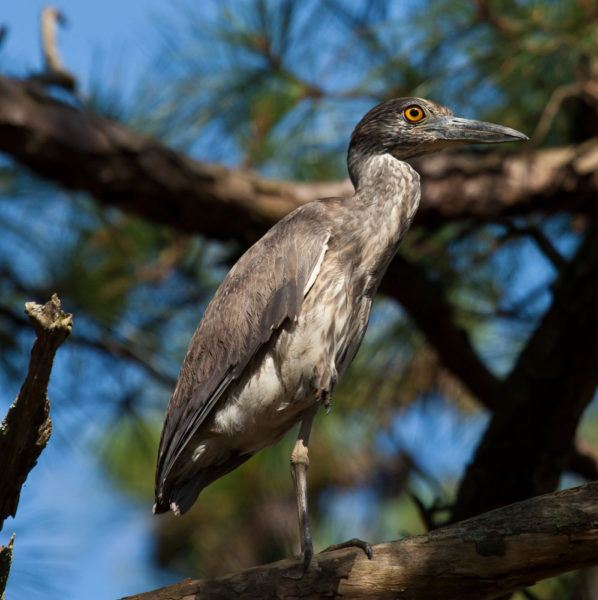
Female yellow-crowned night heron in first-year plumage that bred in Norfolk, Virginia. This dull, brown, streaked plumage stands in stark contrast to the adult plumage. Photo by Bryan Watts.
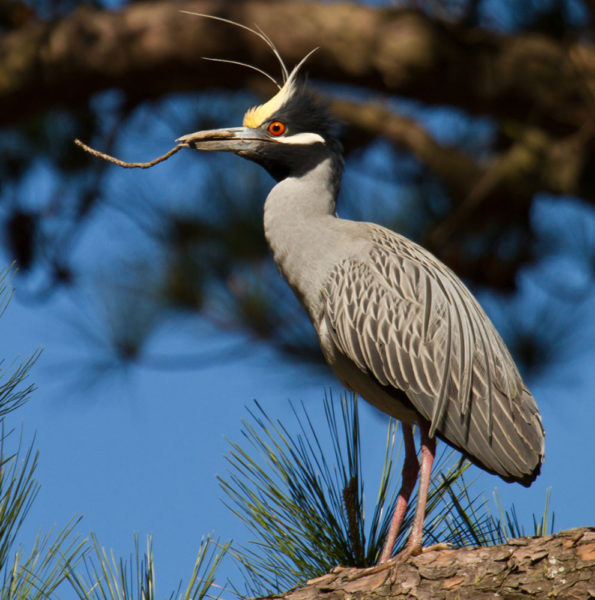
Adult yellow-crowned night heron that bred in Norfolk, Virginia. This individual illustrates the definitive adult plumage that contrasts sharply with brown juvenile plumage. Photo by Bryan Watts.
Young night herons arrive late, lay eggs late, and are predominantly females. In recent years, weekly monitoring of yellow-crowned night herons has focused on 10 colonies supporting 95 pairs. During the 2017 breeding season, seven pairs contained juvenile-plumaged birds and all juveniles were mated with adult-plumaged individuals (<5% of breeders were juveniles). Two individuals (both females) were in first-year plumage and the remaining birds were in second-year plumage. Pairs containing young individuals were the last to arrive and the last to complete clutches. Seven of the nine juveniles observed to breed were females, based on behavior.
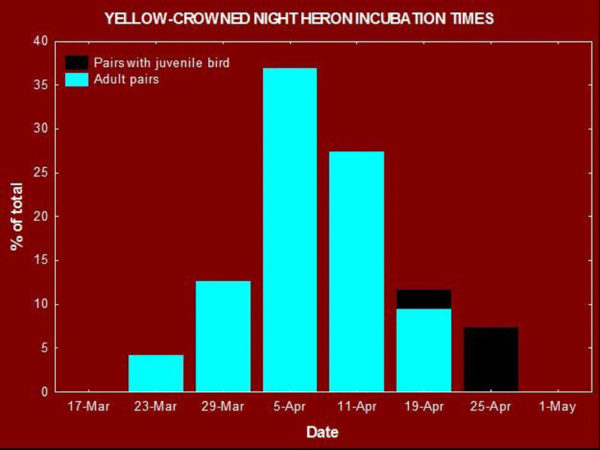
Observations during the spring of 2017 show the laying dates of pairs that include juvenile birds compared to pairs composed of only adults. Juvenile birds arrive and lay later than adult pairs. Data from CCB.
Little is known about the ecology and distribution of juvenile yellow-crowned night herons between the time of independence and the time they return to the breeding grounds in adult plumage. Unlike many species where early breeding has been reported, juvenile yellow-crowns are not associated with breeding areas as nonbreeders. Because of this, it seems unlikely that conditions on the breeding grounds would trigger the migration and breeding of young birds. No definitive information is available on the formation and maintenance of pair bonds. The arrival of paired juvenile and adult birds on the breeding grounds suggest that pair bonds likely form on the winter grounds and that demographic conditions during winter may induce juvenile migration and breeding.
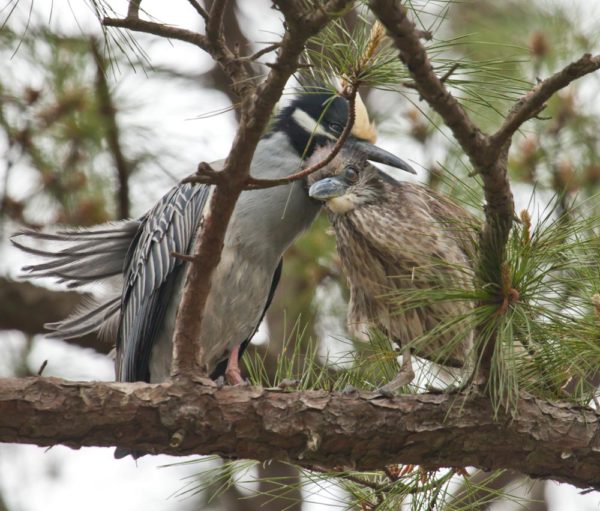
Male yellow-crowned night heron in adult plumage (left) courts with female in first-year plumage shortly after arrival within a colony in Norfolk, Virginia. Photo by Bryan Watts.
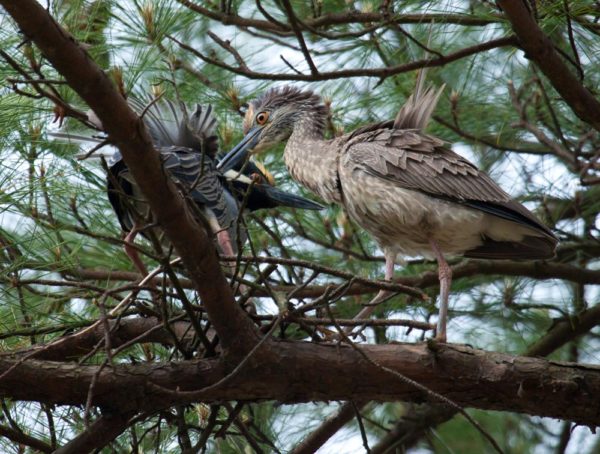
One of the few juvenile males observed to breed within the study area works with an adult-plumaged female to build a nest. Photo by Bryan Watts.



